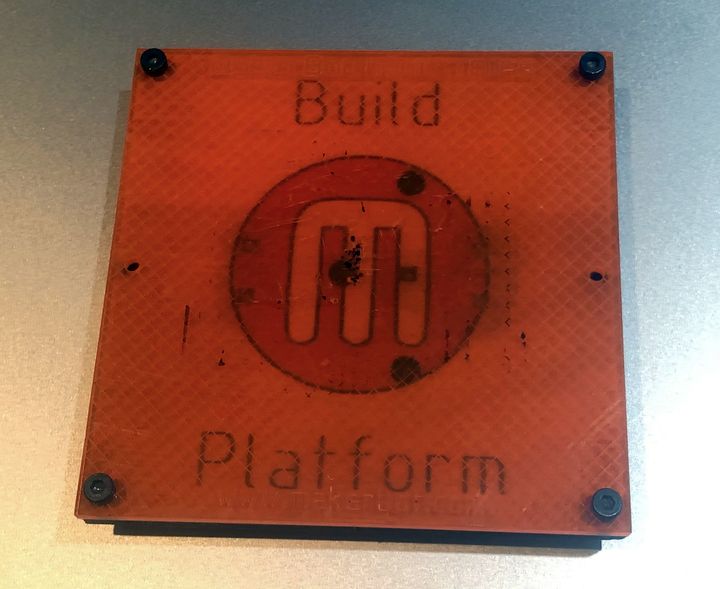
I’m thinking MakerBot should consider changing their name.
The company has undergone such an astonishing change from its initial days that it is literally unrecognizable by many in the 3D print community.
MakerBot History
The company began as more or less a science experiment by three fellows in a Brooklyn makerspace. One of the three was Bre Pettis, whose fame grew as he aggressively promoted the MakerBot brand.
Their initial equipment designs were extraordinarily rudimentary by today’s standards. Customers were shipped kits composed of hundreds of basic components and a significant amount of assembly and tuning was required. I recall even winding nichrome wire around the hot end to build a heater!
These machines were nothing like today’s sophisticated desktop equipment, even at the lowest price points. Today you can purchase for only a few hundred dollars any of several brands of very competent equipment. These machines are “kits” in that you simply bolt a few major subsections together; MakerBot’s initial kits involved soldering, dozens of bolts and laser cut panels.
But as lousy as those machines were, they were loved by the community. They were, for many, the only show in town. If you wanted to get into 3D printing you could buy a six-figure device from Stratasys, or you could spend US$1,000 on a MakerBot kit. It was an easy decision for most.
That community was quite passionate. They wanted MakerBot to succeed as they bought into the vision of “everyone being a maker”. That was never true, but what was true is that every DIY person is a maker.
Those days were so early into 3D printing that even the terminology wasn’t yet set. I recall seeing MakerBot documentation at the time referring to the 3D printer as “your robot”. People didn’t think of it as a 3D printer initially; it was more of a robot that made things. That’s where MakerBot’s name came from: a contraction of “Maker’s Robot”.
Stratasys Takeover
Then things changed, and changed a lot.
MakerBot felt competition arriving both domestically and from overseas, and sought investment to keep up. It was relatively easy to get given MakerBot’s incredible buzz at the time. Pettis, based in NYC, was able to somehow get in front of the media everywhere, appearing on the covers of MAKE and WIRED, among others.
But the initial investments came with a cost: those investors wanted a return on their money. This was not really possible with MakerBot’s original open source business plan, particularly with Asian competitors replicating the Replicator at rock-bottom prices.
The company’s strategy changed to one of growth and eventually selling the company, whereby the investors would gain their return. Along the way, two of the founders dropped off, presumably due to the change in strategy, leaving Pettis in charge.
He was able to strike a deal in 2013 with Stratasys to take over the company for a whopping US$400M. That’s quite a haul for a makerspace-startup!
But from then on the company changed. It transformed from the seat-of-your-pants makerspace style into a much more mature organization. This process took several years and required changing out the entire management team and almost everyone else, too. The product line was completely revamped, ending up with today’s powerful METHOD line of 3D printers.
Today’s MakerBot does not resemble the original MakerBot in almost any way. It’s a completely different company with different products and even different customers.
MakerBot Brand Today
The process has been painful for some, as the 3D print community originally associated with MakerBot due to the open source flavor felt abandoned, and rightly so. That feeling persists even today.
I see this constantly in discussion forums where the moment someone mentions “MakerBot” there is a sudden cascade of vitriol against the company. Almost all of that noise is based on the assumption that MakerBot still markets poor products from days long past. I’m sure few of these folks have ever investigated the new METHOD equipment, and they probably would not due to their years-old baked-in aversion to MakerBot.
Thus I see MakerBot having an interesting option ahead: change their name and brand. Let’s take a look at the implications.
The Case For Changing MakerBot’s Name
- It’s clear at this point there is a portion of the market that will never, ever consider MakerBot due to the reasons above. Their constant portrayal of MakerBot as an “open source” sellout will never cease — unless the name is changed
- MakerBot is now seeking a different audience from their original market: professionals, educators and designers. These parties have less interest in brand names and may even avoid MakerBot based on constant negative commentary
- A new brand would symbolically indicate to everyone that the company is truly different and new, which it actually is
- A new brand would be something staff could rally around and help carry forward new company cultures
- The company doesn’t make “Robots”; it makes 3D printers that build components and the company name should reflect that
The Case Against Changing MakerBot’s Name
- Changing a company name is expensive; you need to redo signage, domain names, business cards, and much more; it had better be worth doing
- Of all MakerBot’s market, the education segment may still have some affinity with the MakerBot brand, and that might be lost with a name change
- Many in the general public, especially those who have not used a 3D printer, may recognize the MakerBot brand — but they are likely not customers at this point anyway
If I had to choose, I’d change the name. I don’t know what internal machinations must take place for this to happen, but it would be, I think, a great step forward for the company.
What do you think? Should MakerBot be retired and change their name into something more reflective of their current and future state?
